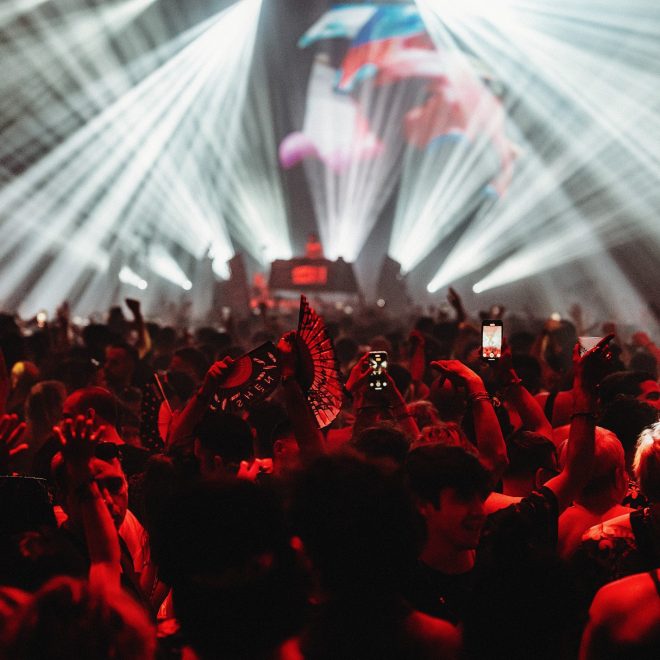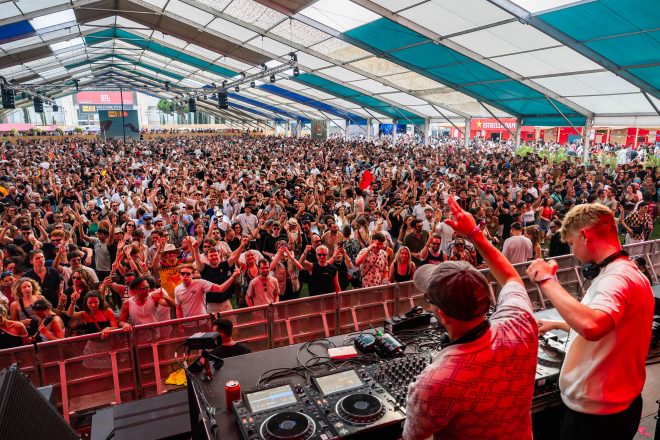Sónar 2025: Where the future didn’t just arrive — it took over

For one electric week in June, Barcelona became the world’s neural center of electronic music, digital culture, and boundary-shattering creativity. Sónar 2025 didn’t just unfold — it erupted. With over 161,000 minds and bodies tuning into its frequency, the festival once again proved why it stands at the vanguard of global cultural transformation. Every beat, installation, performance, and panel became part of a bigger organism — alive, pulsing, and unmistakably future-facing.
This year’s edition was more than a celebration — it was a manifesto. Across Sónar by Day, Sónar by Night, Sónar+D, OFFSónar, and a constellation of city-wide happenings, art, science, and music collided in real time. Where else could you witness a Brazilian punk-techno ritual, an AI-powered sonic sculpture, and a sunrise rave led by dance music royalty — all within hours of each other? Sónar 2025 was a mirror held up to the present, but it reflected what’s just around the corner.
It was also a year of reckoning. With the explosive growth of generative tools, immersive technologies, and collective consciousness around identity, sustainability, and community, Sónar didn’t just present the future — it demanded we take part in shaping it. Whether through thought-provoking installations, brain-bending roundtables, or full-body dancefloor awakenings, this edition invited attendees not just to observe, but to activate.
And now, the horizon shifts again. As the final notes of Sónar 2025 echo through the city, all eyes turn to Sónar 2026, where a radical new format will rewrite how we experience festivals altogether. One venue. One unified flow. All of Sónar — Day, Night, and D — under one roof. The countdown has already begun.

This year, Sónar welcomed a record-breaking 161,000 attendees — 7,000 more than in 2024 — split across Sónar by Day (52,500), Sónar by Night (66,500), and OFFSónar/Sónar Week (42,000). The program spanned nearly 200 performances across 10 stages, continually pushing the boundaries of music and performance.
Sónar by Day offered a dynamic blend of international heavyweights and bold local talent. MOCHAKK and Honey Dijon delivered crowd-frenzied sessions, while Maria Arnal, Alizzz, Niño de Elche + Raül Refree, and Tarta Relena channeled a distinctly Iberian energy into new live formats. TETO PRETO ignited the dancefloor with raw theatrical force, while a poignant tribute to Ryuichi Sakamoto by Alva Noto & Fennesz reminded everyone that electronic music can hold space for grief and reverence. Other standouts included the British duo Overmono, Yerai Cortés’s ‘Guitarra Coral’, and the spellbinding Spanish premiere of ‘Concrète Waves’ by Actress and Suzanne Ciani, co-produced with London’s Barbican.

At Sónar by Night, spectacle reigned. BICEP’s new audiovisual project CHROMA opened Friday like a cinematic detonation. What followed was a masterclass in genre fluidity and club power: Peggy Gou, Four Tet, Jayda G, Richie Hawtin, and Barry Can’t Swim spun the crowd into deep communion. Saturday delivered pure ecstasy — with the Spanish debut of Nathy Peluso’s GRASA, and back-to-back sets from Skrillex b2b Blawan, Armin van Buuren b2b Indira Paganotto, and Dee Diggs b2b Ultra Naté carrying the dancefloor into sunrise. These were not just performances — they were communal rites.
Then there was Sónar+D 2025, the beating brain of the festival. More than 580 speakers and exhibitors participated in over 100 scheduled activities, transforming the Palau de Congressos into a hotbed of radical ideas, immersive experiments, and cross-disciplinary collisions. Organized around three thematic axes — AI + Creativity, Futuring the Creative Industries, and Worlds to Come — the programming was unflinchingly ambitious. It tackled everything from digital sustainability and terraforming to neurohacking, space exploration, and the fractured future of identity in a post-internet world.

Names like Libby Heaney, Tega Brain, Rebecca Fiebrink, Xin Liu, and Albert.DATA and Danielle Braithwaite-Shirley took center stage. Maria Arnal’s premiere of “Ama” turned sound into ritual. The Project Area returned with 60+ installations from global collectives, institutions, and tech giants, including Ableton, DeepMind, AlphaTheta, Reset Networks, and emerging voices via AI & Music powered by S+T+ARTS. The all-new Communities Program placed independent creative collectives like Barcelona Music Tech Hub and The Generative Art Museum front and center.
Meanwhile, Sónar extended its reach across the city through the expanded Sónar Week: a concert at Palau de la Música Catalana featuring works by Steve Reich and Raquel García Tomás, an immersive installation at the Mies van der Rohe Pavilion, and Foto Colectania’s ‘The Art of Navigation’, on view until December. OFFSónar returned to Poble Espanyol with sold-out showcases from some of the world’s most vital labels and collectives.
Sónar 2026: A New Era in One Place
And now — the next evolution.
Sónar 2026 will mark a radical reimagining of the festival. For the first time, all three pillars — Sónar by Day, Sónar by Night, and Sónar+D — will coexist under one roof at Fira Gran Via, from June 18 to 20. A unified space. A frictionless experience. A platform designed not just to host performances, but to birth new forms of them. New interactions, new rituals, new ways of being together.
Tickets go on presale on Tuesday, June 17, at noon, with SonarPass and SonarPass+D (both standard and VIP) available at sonar.es. Pre-registration begins tonight.
This isn’t a format tweak. It’s a bold invitation to rethink the very architecture of festival culture. Sónar is no longer split across space and time — it’s becoming a single living entity. One that listens, questions, dances, and imagines in real-time.
And if Sónar 2025 was the overture, Sónar 2026 will be the full symphony.


